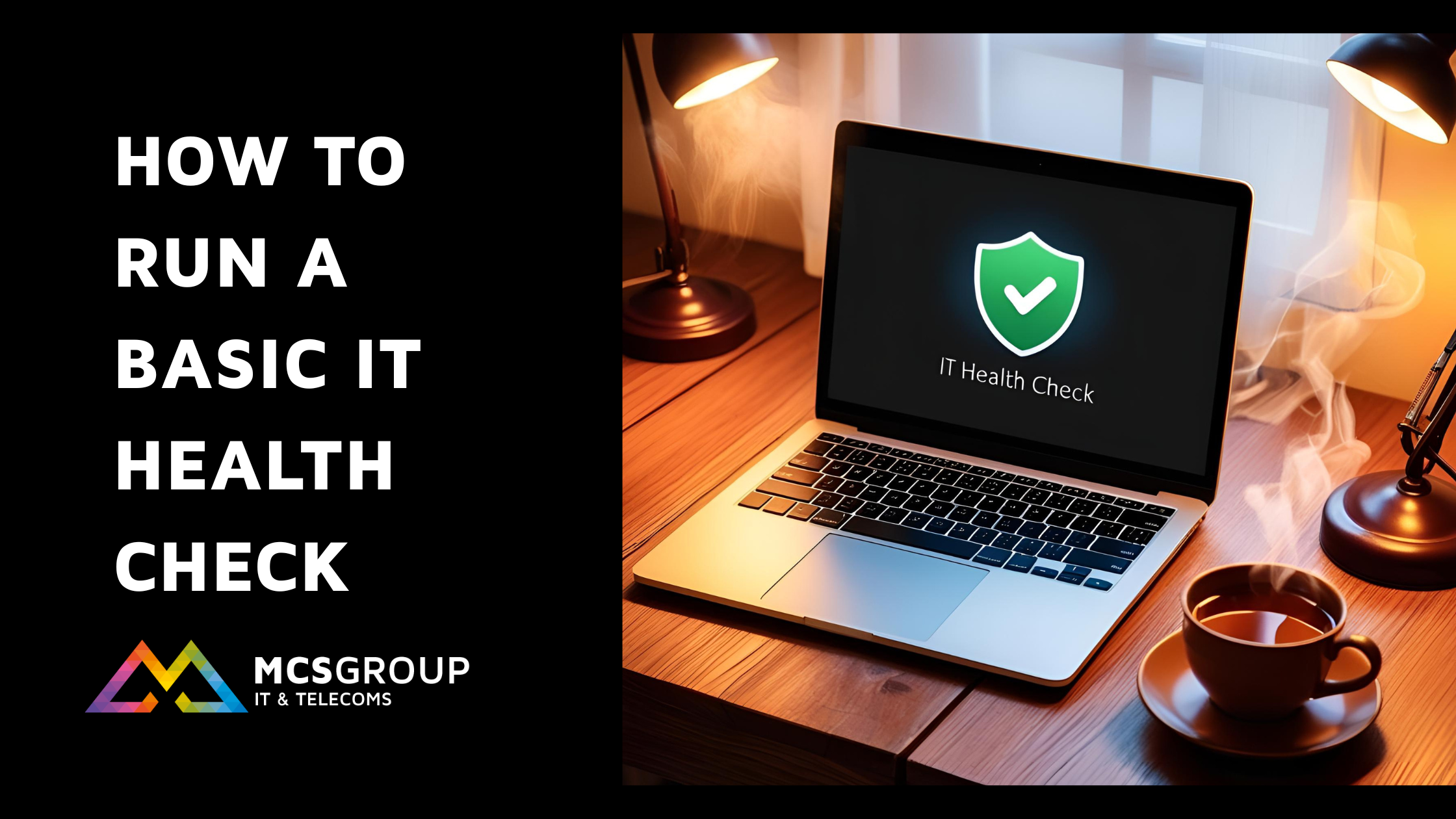
How to Run a Basic IT Health Check
You know that moment when your phone slows to a crawl, your battery drains at lightning speed, or apps start crashing for no reason?
That same chaos happens behind the scenes in your office or home IT setup - computers, networks, backups - all silently working until they don’t.
Running a basic IT health check is like giving your tech world the same care you'd give your smartphone when it’s acting up. And yes, it can be just as easy and satisfying.
Let’s break it down - no jargon, no fluff, just real talk.
1. Is Your Tech Physically Okay? (Just Like Checking for a Cracked Screen)
When your phone gets hot, starts lagging, or if you accidentally drop it, you check it, right?
Do the same for your other gear:
- Are your desktop fans working or clogged with dust?
- Is your Wi-Fi router overheating like a phone left in the sun?
- Are cables frayed, unplugged, or chewed by your dog?
Quick win:
Take 10 minutes to wipe down your gear, untangle cords, and make sure everything’s plugged in and breathing.
2. Have You Updated Lately? (You Know That “Remind Me Later” Button You Always Hit?)
When your phone nags you to update, it’s not just being annoying - it’s protecting itself. Your IT gear is the same.
- OS updates for computers = like updating iOS or Android.
- App updates = keeping Zoom, Teams, or Chrome working properly.
- Router firmware = the update you didn’t know your Wi-Fi even had.
3. Run a Virus/Malware Scan (Like Checking Your Phone for a Bad App)
Ever downloaded a sketchy flashlight app and ended up with pop-ups galore?
The same thing happens with laptops and desktops - just on a bigger scale.
- Run a full antivirus scan - the IT version of checking your phone for weird apps or malware.
- Use malware scanners like Malwarebytes for extra peace of mind.
- Don’t trust free software from unknown sites - it’s like side-loading apps from shady URLs.
4. Are Your Files Backed Up? (What If You Dropped Your Phone Right Now?)
You know that panic when your phone breaks and you hope your photos are in the cloud?
Your business files, projects, and documents deserve the same protection.
- Back up to the cloud (like using iCloud, Google Drive, or OneDrive).
- Keep an external hard drive too (like printing copies of your flight tickets).
- Test your backups. A backup that doesn't restore is the tech version of having a spare key - and then forgetting where you hid it.
Pro tip:
Use the 3-2-1 rule: 3 copies, 2 different types of storage, 1 off-site (aka cloud).
5. Passwords and Access: Are You the Only One Holding the Keys?
Phones now use Face ID, thumbprints, and passcodes. You protect your phone, so you should protect your systems the same way.
- Use strong passwords (not "password123").
- Turn on Two-Factor or Multifactor Authentication.
- Check who still has access. Do ex-employees still have login info?
Tip:
Treat your work accounts like your phone. Would you give your phone passcode to someone who left your team six months ago? Or better yet, leave it completely passcode free so anyone can access personal apps like your emails or mobile banking?
6. Network Check: Is Your Wi-Fi Like That Corner of the House Where Nothing Loads?
We’ve all had moments where the phone refuses to load anything because the Wi-Fi is crawling.
- Restart your router (a handy restart usually solves most issues - sometimes it just needs a breather like we do).
- Run a speed test - are you getting what you’re paying for?
- Change your router’s password if it’s still the default password it came with.
7. Document Everything: Because You Can’t Just ‘Reset to Factory’ in Real Life
With phones, if things go really wrong, you reset and restore from backup.
In IT? Not so simple.
- Keep a log of passwords (in a secure password manager).
- Note who has access to what.
- Write down where your backups are and how to restore them.
Pro tip:
If someone else had to fix things while you were away, would they know where to start? If not, document it.
Final Thoughts: Give Your Tech a Tune-Up Like You Would Your Phone
Running an IT health check isn’t just for techies. It’s something anyone can do, especially if you think about your IT setup like your phone:
- You keep it charged ✅
- You back it up ✅
- You protect it with a password ✅
- You update it regularly ✅
Now, apply that same energy to your wider IT systems. Just a few simple checks can prevent disaster and save serious time (and money).
Want more tips like this direct to your inbox?


